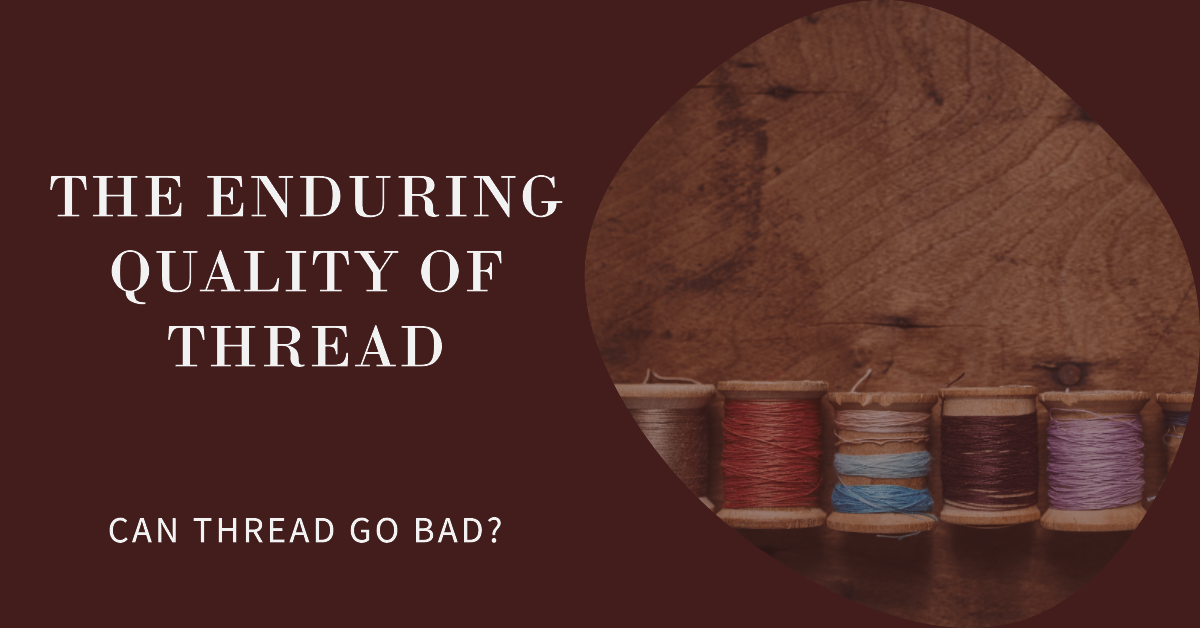
The Enduring Quality of Thread: Can Thread Go Bad?
Have you ever come across that stray spool of sewing thread in the back of your grandma's old sewing box or stumbled upon a forgotten stash in your attic? Your heart might've skipped a beat as your fingers brushed over the relic of past sewing endeavors. But then, a question creeps into your mind, "Can this thread still hold the fabric? Or more specifically, can sewing thread go bad?"
ThreadArt fans, sewing experts, and curious newcomers alike, you're in for a treat. As a premier destination for all things thread, we're here to spill the tea on this threadbare conundrum. Buckle up for a journey unraveling the lifespan of the threads that hold our world together (quite literally).

The Thread Life Expectancy
Threads, just like us humans, have their own tale of life and death. The question of thread going "bad" isn't as cut-and-dry as with food or cosmetics. It's not like one day your thread is thriving, and the next, it's a disheveled, unusable mess. Instead, threads have more of a "fade into the sunset" kind of lifespan.
Your thread’s vitality depends on a mix of factors like material, storage conditions, and age. For instance, cotton thread has an estimated shelf-life of a few years, while high-quality polyester can strut around, showing off its strength for decades.
What Do Bad Threads Look Like?
So, what are the tell-tale signs of a thread going bad? It's pretty simple, really. If your thread breaks easily when you pull it, or if it seems overly dry and brittle, you're looking at a thread past its prime. Discoloration is another red flag – if your once vibrant red thread is now a sad, faded pink, it might be time to retire it.
When Good Threads Go Bad: The Reasons
The primary factors contributing to thread degradation are sunlight, heat, moisture, and age. Sunlight, especially the harsh UV rays, can make your threads brittle and cause them to break easily. Heat and moisture are threads' worst enemies – they can cause threads to weaken and colors to fade.
And of course, age. As much as we'd like to think that our vintage threads carry the romance of a bygone era, they may not be the best choice for your next sewing project. Over time, threads lose their strength, becoming more susceptible to breaking.

Saving Thread
To ensure your threads live a long, productive life, store them in a cool, dry place away from direct sunlight. A good storage system can protect your thread investment and make sure you're ready for any creative endeavor that pops up.
In the world of thread, there's nothing more heartbreaking than seeing a beautiful spool go to waste. So take care of your threads, and they'll take care of you and your creations.
The Life Expectancy of Today's Threads
Now, this brings us to the golden question. How long will the thread you buy today last? In an era where sustainability and longevity are high on the priority list, this question is more relevant than ever.
With advancements in textile technology, the threads you purchase from us at ThreadArt today are likely to last longer than those from generations past. These innovations have paved the way for high-quality, durable threads that withstand the test of time.
Our cotton threads, renowned for their softness and flexibility, have an average lifespan of up to 5 years when stored properly. If you're on the hunt for an even more robust option, our polyester threads have got you covered. Polyester sewing threads boast an impressive shelf-life, with many lasting well over a decade thanks to their superior resistance to heat, sunlight, and moisture.
In the case of specialty threads like metallic, life expectancy can vary greatly based on their quality and storage conditions. On average, these threads can be expected to last up to 5 years.
What’s important to remember is that longevity is not only a product of the thread's inherent quality but also of how it's cared for. So, make sure to store all your threads correctly to maximize their lifespan.
Remember, every thread has its own tale. Let's make sure each one is as vibrant and enduring as the creations it helps bring to life. Happy sewing!